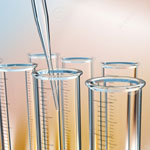ATEX certification
Sunkiss Matherm: know-how of industrial oven manufacturer
![]() Design and manufacturing of tailor-made equipment
Design and manufacturing of tailor-made equipment
![]() Guarantee of the best infrared technical solution
Guarantee of the best infrared technical solution
![]() Testing and testing at our facilities and in your equipment
Testing and testing at our facilities and in your equipment
Accueil | Our technologies > Thermoreactor® | Operating principles

eterogeneous catalysis (or contact catalyst) aims to process liquid or, more commonly, gaseous reagents by using a solid catalyst. The chemical process occurs at the juncture between solid and fluid as reactants on the solid’s surface are absorbed.
This absorption harnesses specific points where it is possible to interact chemically with the reactant with varying strength. The absorbed entities created in this way then achieve the desired effect, provided that the right catalysis has been chosen (Sabatier principle). Thus the non-saturation of the atoms or ions on the surface plays an essential role.
Broadly speaking, a catalyst is a solid whose properties enable it to increase – sometimes by multiples of millions – the speed of a thermodynamically possible chemical transformation. This multiplying factor increase its action. The initial components and products of the reaction form a gaseous or liquid phase and the solid catalyst emerges from the reaction in an unaltered state. While the reaction system can change in accordance with a variety of thermodynamically possible ways, the catalyst selectively increases one of these ways. It serves to guide the evolution of system. This is known as selectivity.
Because it does not feature in the stochiometric equation of the reaction that it expedites, it cannot change its thermodynamic characteristics, especially the standard free enthalpy variation. So it does not alter the position of the balances that it helps to achieve.

he Thermoreactor® is a heating unit featuring a radiant unit that uses catalytic combustion of gas to produce infrared radiation. In order to produce its energy, an air-gas mixture passes through an appropriated catalystic material and oxidates the mixture at a temperature lower than that of the flame.
This has the effect of releasing energy that develops ideally at the surface of the unit thanks to special planned oxygenation. This generates a distinctive infrared radiation with a very wide spectrum so that it can cover the whole range of wavelengths absorbed by the paint.
This perfect agreement of emission and absorption spectra is the direct cause of the improved drying and the acceleration of the polymerisation of organic coating.
nflammable solvent vapours are emitted in the curing ovens, which is why one of the main problems of other units of this type relates to safety. However, the vapours of the most commonly used solvents for applying paint and varnish do not ignite in Thermoreactors®.
Because of this property, these units have enjoyed exemption since 1973 from orders 405 and 406 of the Law of 19/12/1917 on dangerous, unhealthy or uncomfortable establishments, which bans the presence of flames and hot points in an enclosure containing inflammable vapours.
Furthermore, like natural gas, the Thermoreactor® also oxidates solvents (hydrocarbons) in contact with the emission surface. This leads to the establishment of a solvent concentration gradient, with nil value at the point of contact with the Thermoreactor® surface..
Consequently, everywhere where the temperature exceeds the auto-ignition temperature, the solvent concentration is below the ignition limit and ignition does not occur.
On the other hand, when traditional infrared emitters reach the same temperature, ignition occurs if the solvent concentration is higher than the ignition limit.
![]() Design and manufacturing of tailor-made equipment
Design and manufacturing of tailor-made equipment
![]() Guarantee of the best infrared technical solution
Guarantee of the best infrared technical solution
![]() Testing and testing at our facilities and in your equipment
Testing and testing at our facilities and in your equipment
